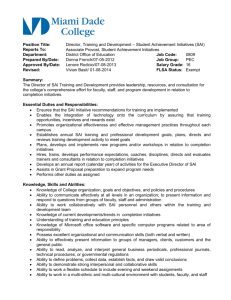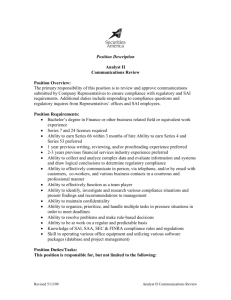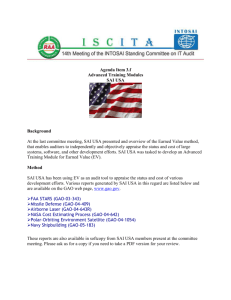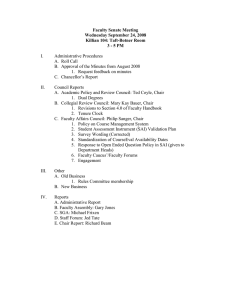Proposal to the Faculty Senate April 7, 2010
advertisement
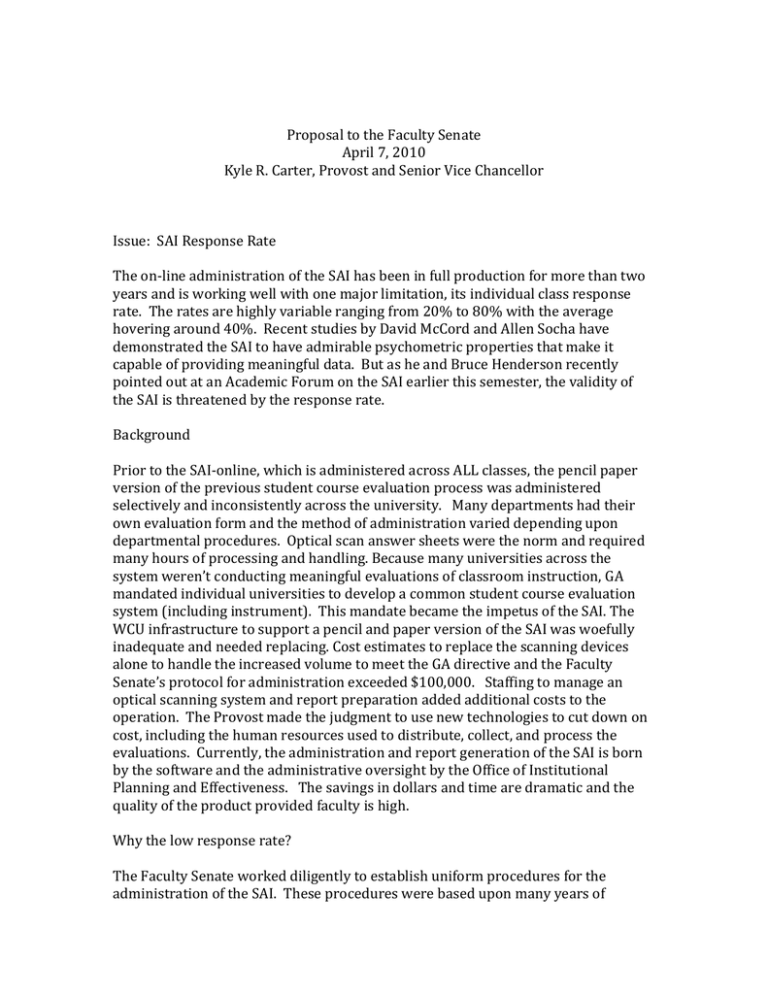
Proposal to the Faculty Senate April 7, 2010 Kyle R. Carter, Provost and Senior Vice Chancellor Issue: SAI Response Rate The on-line administration of the SAI has been in full production for more than two years and is working well with one major limitation, its individual class response rate. The rates are highly variable ranging from 20% to 80% with the average hovering around 40%. Recent studies by David McCord and Allen Socha have demonstrated the SAI to have admirable psychometric properties that make it capable of providing meaningful data. But as he and Bruce Henderson recently pointed out at an Academic Forum on the SAI earlier this semester, the validity of the SAI is threatened by the response rate. Background Prior to the SAI-online, which is administered across ALL classes, the pencil paper version of the previous student course evaluation process was administered selectively and inconsistently across the university. Many departments had their own evaluation form and the method of administration varied depending upon departmental procedures. Optical scan answer sheets were the norm and required many hours of processing and handling. Because many universities across the system weren’t conducting meaningful evaluations of classroom instruction, GA mandated individual universities to develop a common student course evaluation system (including instrument). This mandate became the impetus of the SAI. The WCU infrastructure to support a pencil and paper version of the SAI was woefully inadequate and needed replacing. Cost estimates to replace the scanning devices alone to handle the increased volume to meet the GA directive and the Faculty Senate’s protocol for administration exceeded $100,000. Staffing to manage an optical scanning system and report preparation added additional costs to the operation. The Provost made the judgment to use new technologies to cut down on cost, including the human resources used to distribute, collect, and process the evaluations. Currently, the administration and report generation of the SAI is born by the software and the administrative oversight by the Office of Institutional Planning and Effectiveness. The savings in dollars and time are dramatic and the quality of the product provided faculty is high. Why the low response rate? The Faculty Senate worked diligently to establish uniform procedures for the administration of the SAI. These procedures were based upon many years of research related to student course evaluation response bias. Largely based on these research findings, the Senate approved multiple restrictions on how the SAI was to be administered (e.g., Restricted time interval, mandatory time between end of course and time of administration, embargo against positive and negative incentives). These restrictions were implemented with good intent, but they are the primary factors reducing the response rate. It is important to note that the WCU restrictions have never been tested to determine the degree to which they create bias. Social scientists differentiate between statistical significance and practical significance. Studies may reveal a statistically significant difference between factors, but in the real world they may not mean much. For example, if there is a systematic bias that deflates instructor ratings by .1 of a point, is that important for decision making? When the bias occurs across all faculty in all courses, it may not matter when we use a WCU norm. At any rate, we need to test these restrictions. The Proposal Many faculty would like to modify some of the restrictions that are currently in place. I do not support doing so without knowing what effect modifications would have on the practical use of the SAI. Therefore, I propose that the Senate designate a subgroup to carry out pilot studies to determine whether any of the current restrictions can be modified or relaxed. These studies should focus on the practical effect of the modification rather than the theoretical/philosophical effect. I have a favorite quote that seems appropriate here: “One needs to differentiate between times that require you to be precise and times that require you to be accurate.” I hope the Senate will see the wisdom in putting our procedures to the test.
